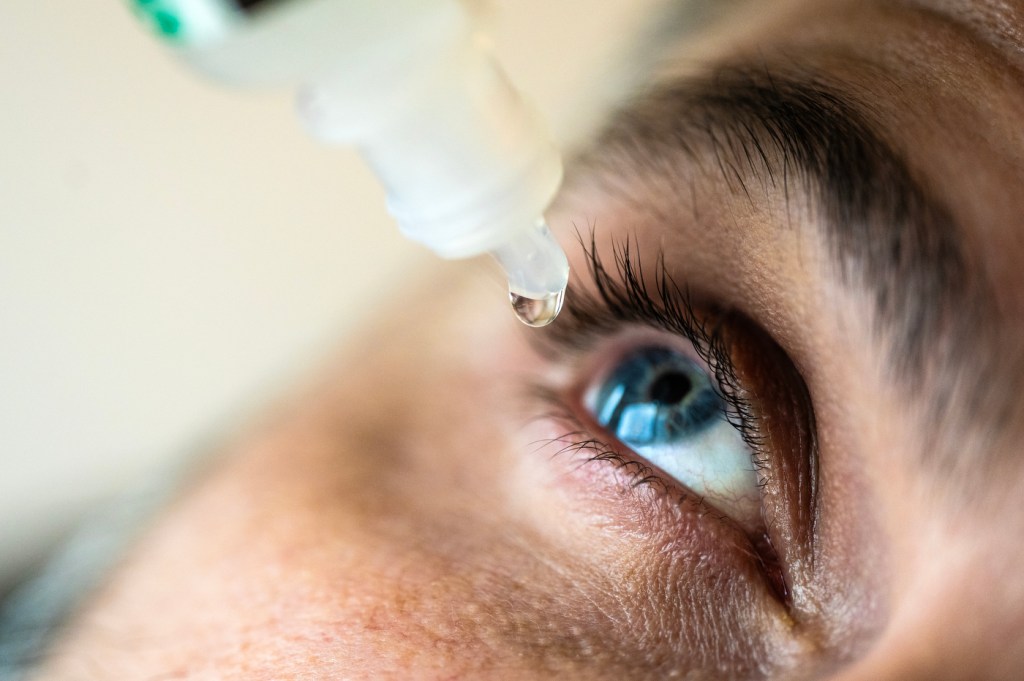Are my eye drops safe to use? OTC medications aren’t subject to the same testing as prescription meds, drug expert says

Update: The FDA announced on Wednesday, Feb. 28, that eye ointment products sold at CVS and Walmart are being recalled due to a potential risk of infection. In October, a Northeastern pharmacy expert spoke about the lack of quality control associated with certain over-the-counter medications in light of a recall issued then.
More over-the-counter eye products are being pulled from the shelves in CVS and Walmart stores due to potential infection risk.
Several eye ointment products under the band name Equate are subject to the recall, according to a Food and Drug Administration announcement on Wednesday, which cited a “lack of sterility assurance” at the manufacturing sites in Maharashtra, India.
The FDA warned U.S. consumers in October not to use certain over-the-counter eye drops, as more than two dozen eye products from several major brands carry risk of infection.
“These products are intended to be sterile,” regulators said then — a message they reiterated this week. “Ophthalmic drug products pose a potential heightened risk of harm to users because drugs applied to the eyes bypass some of the body’s natural defenses.”
No injuries were reported linked to the contaminated products in October; but federal regulators urged consumers to immediately cease using any eye drop products from the following brands: CVS Health, Leader (Cardinal Health), Rugby (Cardinal Health), Rite Aid, Target Up&Up and Velocity Pharma.
The October recall was associated with an FDA finding of “insanitary conditions in the manufacturing facility and positive bacterial test results from environmental sampling of critical drug production areas in the facility.”
A Northeastern drug expert says that unlike prescription products, which undergo “more rigorous” quality control, over-the-counter medications — once approved by the FDA — aren’t subject to testing and quality control measures as stringent as their doctor-ordered counterparts.

“The challenge with a lot of the [over-the-counter] product is unfortunately we’re not seeing as rigorous a testing paradigm once the product has been approved for use and is widely available,” says Mansoor Amiji, university distinguished professor of pharmaceutical sciences and chemical engineering at Northeastern.
Drugs administered to the eye have to meet specific FDA requirements before they’re approved for use, including that they be sterile, Amiji says.
“What sterility means is it has to be free from any living microorganisms,” Amiji says. “If you have to inject the drug into the body, in addition to being sterile, there’s also a requirement that it has to have purity of what are called pyrogens, which are components produced by bacteria.”
The FDA may have upped its testing of existing eye products in recent years, Amiji says, citing an outbreak of Pseudomonas aeruginosa, a drug-resistant bacterial infection that can cause vision loss and even death, in EzriCare eye drops this year.
The bacterial strain was found in 81 people, four of whom died from the infection.
“There is a greater vigilance from the regulatory agency to start looking at ocular products to ensure that they’re maintaining their sterility — at least until the expiration date,” Amiji says.
Many of the over-the-counter products cited in the FDA advisory are multiple-dose dials and require an effective preservative to keep well over the course of use, Amiji says.
“In addition to being sterile when they’re manufactured, they need to preserve their sterility even after the product is opened, because you’re going to be dispensing multiple doses from it,” Amiji says.
Specific infections, especially drug-resistant ones, may overwhelm preservatives used in certain eye drop products, he says.
Given the sanitation concerns cited by the FDA, Amiji suspects that the infections originated at the manufacturing facility.
“But when you think about the chain of custody from the manufacturer all the way to the pharmacy, there are a number of places where infections could develop — from where it was manufactured, stored or even shipped,” Amiji says.
Theoretically, the drug could become infected after it is manufactured, like if there is a compromise in the seal, he says.
Amiji advises that consumers visit the emergency room if they experience symptoms after using eye drops that include itchy eyes, redness, discharge from the eye, altered or blurry vision and pain.
Tanner Stening is an assistant news editor at Northeastern Global News. Email him at t.stening@northeastern.edu. Follow him on X/Twitter @tstening90.






